Dual-Polarized Stacked Patch Antenna for Wireless Communication Application and Microwave Power Transfer
Abstract
:1. Introduction
2. Antenna Design
2.1. Single Polarized Antenna Design
2.2. Dual-Polarized Antenna Design
3. Simulated and Measured Results
4. Rectifying Circuit Design
5. Conclusions
Author Contributions
Funding
Institutional Review Board Statement
Informed Consent Statement
Data Availability Statement
Conflicts of Interest
References
- Brown, W.C. The history of wireless power transmission. Sol. Energy 1996, 56, 3–21. [Google Scholar] [CrossRef]
- Yun, W.; Yoon, Y.J. A wideband aperture coupled microwave array antenna using inverted feeding structures. IEEE Trans. Antennas Propag. 2005, 53, 861–862. [Google Scholar]
- Lau, K.L.; Luk, K.M. A wideband dual-polarized L-probe stacked patch antenna array. IEEE Antennas Wirel. Propag. Lett. 2007, 6, 529–532. [Google Scholar]
- Serra, A.A.; Nepa, P.; Manara, G.; Tribellini, G.; Cioci, S. A wide-band dual-polarized stacked patch antenna. IEEE Antennas Wirel. Propag. Lett. 2007, 6, 141–143. [Google Scholar] [CrossRef]
- Caso, R.; Serra, A.A.; Pino, M.R.; Nepa, P.; Manara, G. A wideband slot-coupled stacked patch array for wireless communications. IEEE Antennas Wirel. Propag. Lett. 2010, 9, 986–989. [Google Scholar]
- Gao, Y.; Ma, R.B.; Wang, Y.P.; Zhang, Q.Y.; Parini, C. Stacked patch antenna with dual-polarization and low mutual coupling for massive MIMO. IEEE Trans. Antennas Propag. 2016, 64, 4544–4549. [Google Scholar] [CrossRef]
- Guo, Y.S.; Yang, S.W.; Zhu, Q.J.; Nie, Z.P. A compact dual-polarized double E-shaped patch antenna with high isolation. IEEE Trans. Antennas Propag. 2013, 61, 4349–4353. [Google Scholar]
- Barba, M. A high-isolation, wideband and dual-linear polarization patch antenna. IEEE Trans. Antennas Propag. 2008, 56, 1472–1476. [Google Scholar] [CrossRef] [Green Version]
- Tang, Z.Y.; Liu, J.H.; Cai, Y.M.; Wang, J.H.; Yin, Y.Z. A wideband differentially fed dual-polarized stacked patch antenna with tuned slot excitations. IEEE Trans. Antennas Propag. 2018, 66, 2055–2060. [Google Scholar] [CrossRef]
- Xie, G.J.; Zhang, F.S.; Liu, S.B.; Zhao, Y. A wideband dual-polarized aperture-coupled antenna with embedded in a small metal cavity. IEEE Trans. Antennas Propag. 2020, 68, 7646–7651. [Google Scholar] [CrossRef]
- Gao, S.; Sambell, A. Low-cost dual-polarized printed array with broad bandwidth. IEEE Trans. Antennas Propag. 2004, 52, 3394–3397. [Google Scholar] [CrossRef]
- Zhang, Y.M.; Li, J.L. A dual-polarized antenna array with enhanced interport isolation for far-field wireless data and power transfer. IEEE Trans. Veh. Technol. 2018, 67, 10258–10267. [Google Scholar] [CrossRef]
- Lin, W.; Ziolkowski, R.W. Electrically small Huygens antenna- based fully-integrated wireless power transfer and communication system. IEEE Access 2019, 7, 39762–39769. [Google Scholar] [CrossRef]
- Ma, B.Y.; Pan, J.; Liu, S.B.; Tung, N.; Aung, Z.T.; Guo, Y.X. Dual-polarized printed antenna with compact ground plane for microwave wireless power transfer. In Proceedings of the 2020 Asia-Pacific Microwave Conference (APMC2020), HongKong, China, 10–13 November 2020; pp. 170–172. [Google Scholar]
- Erkmen, F.; Ramahi, O.M. A scalable dual-polarized absorber surface for electromagnetic energy harvesting and wireless power transfer. IEEE Trans. Microw. Theory Tech. 2021, 69, 4021–4028. [Google Scholar] [CrossRef]

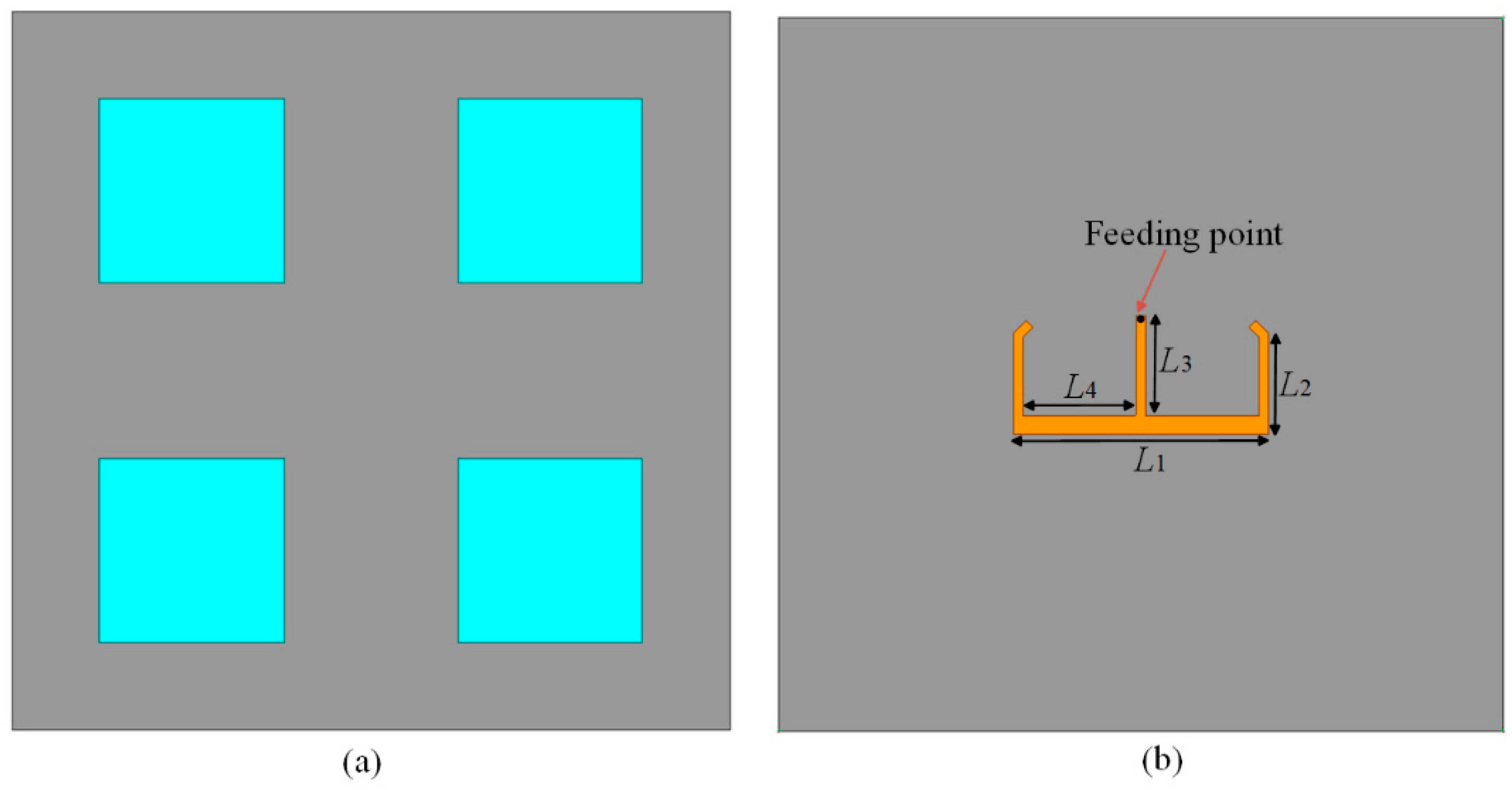
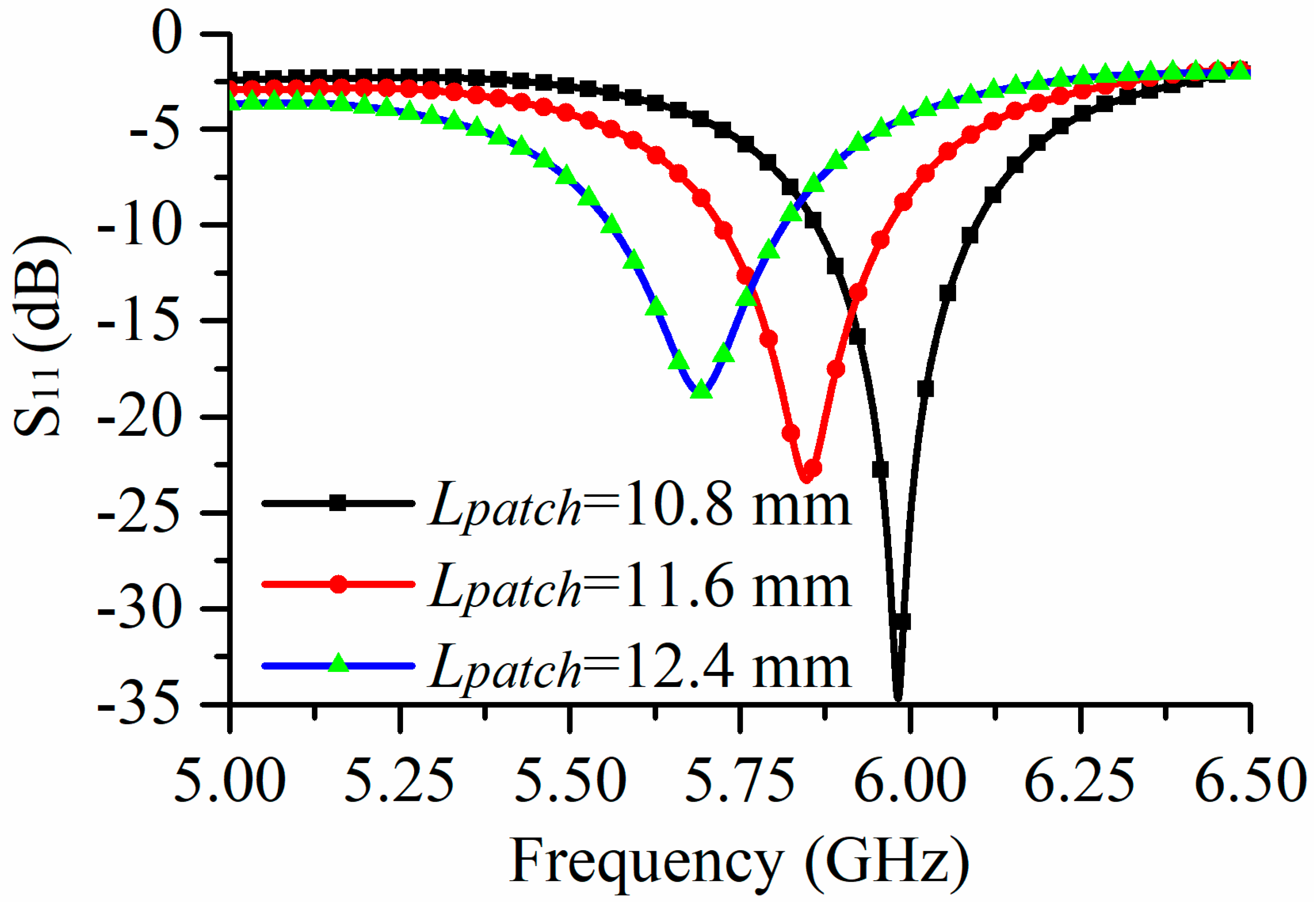
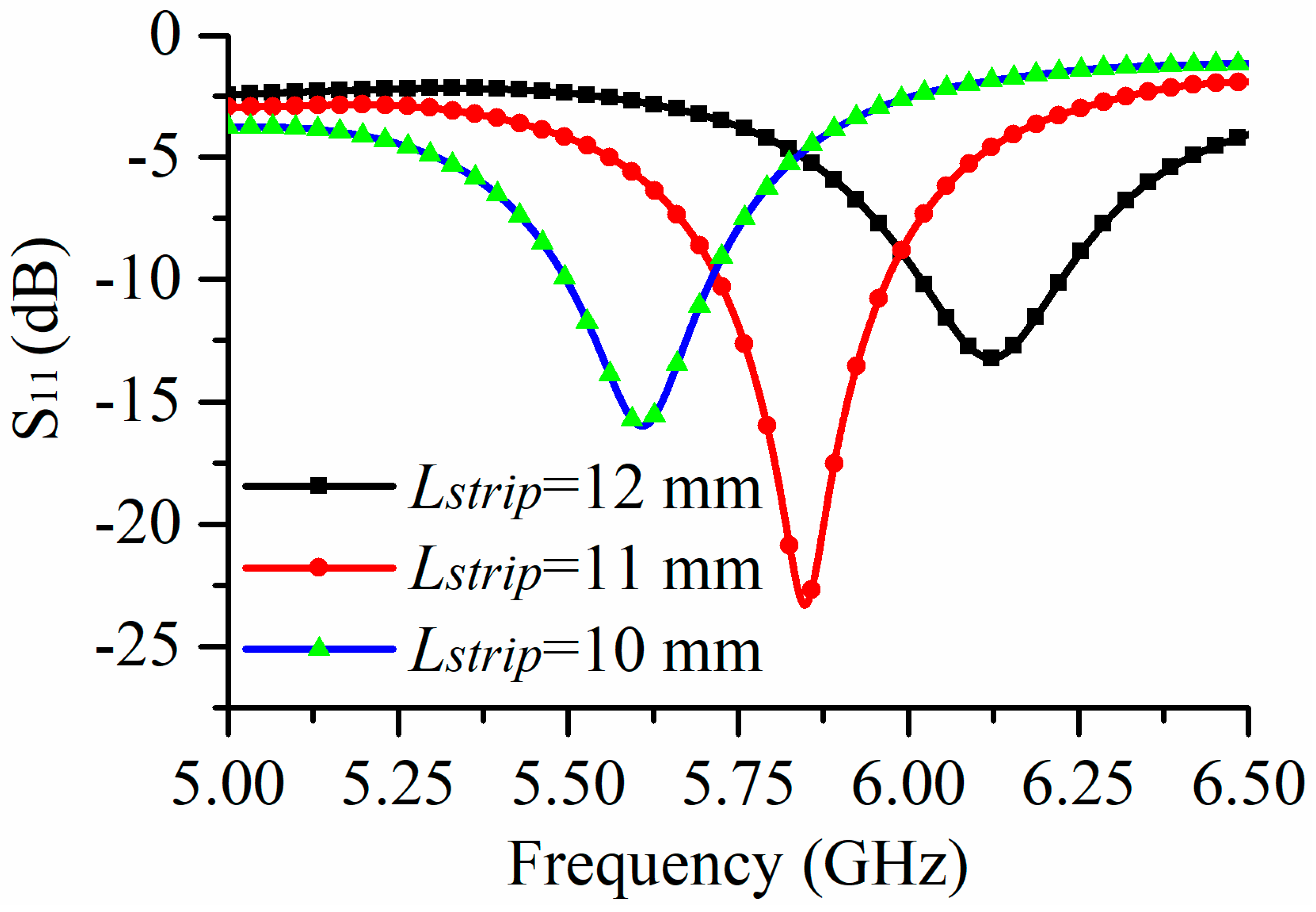
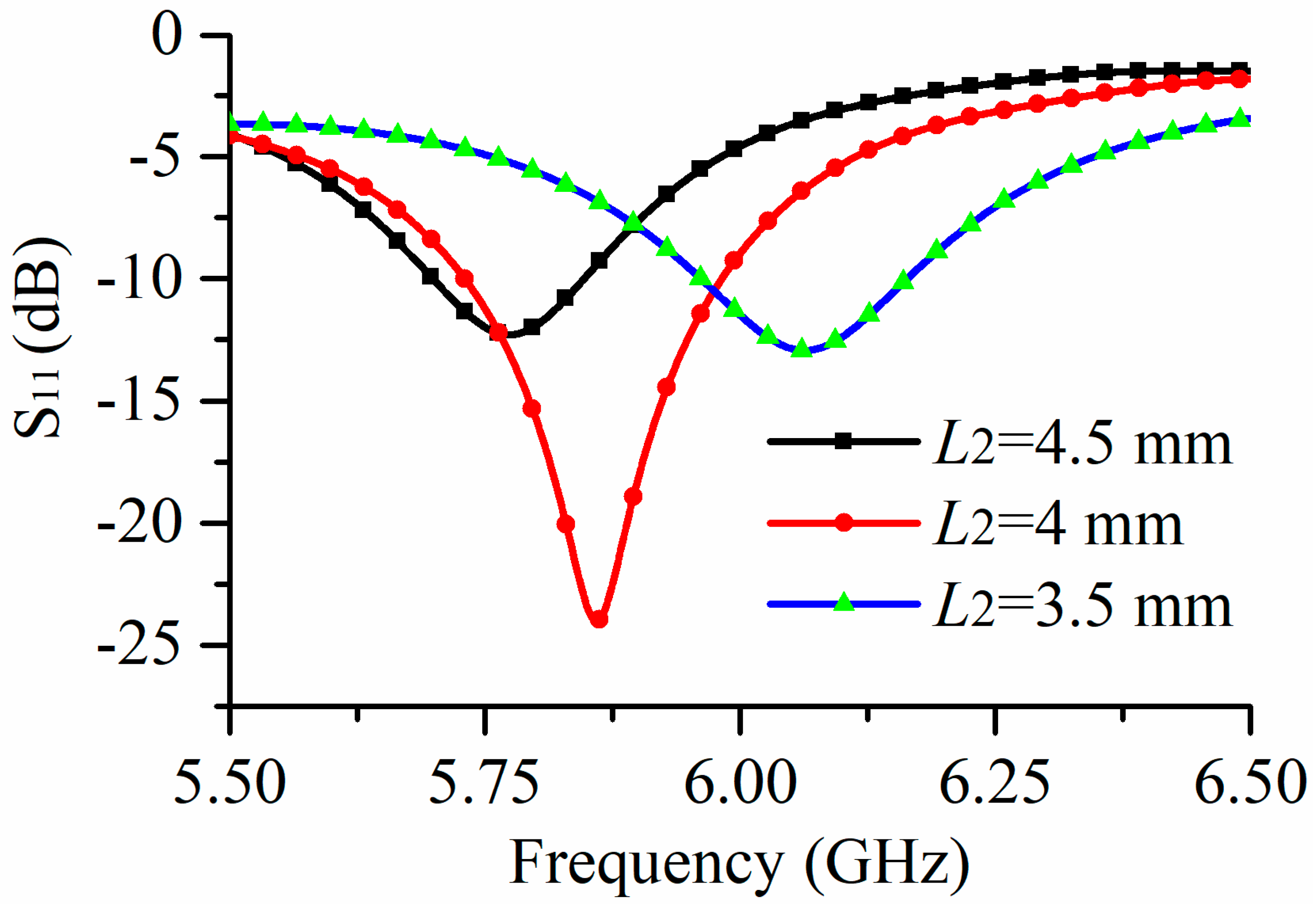
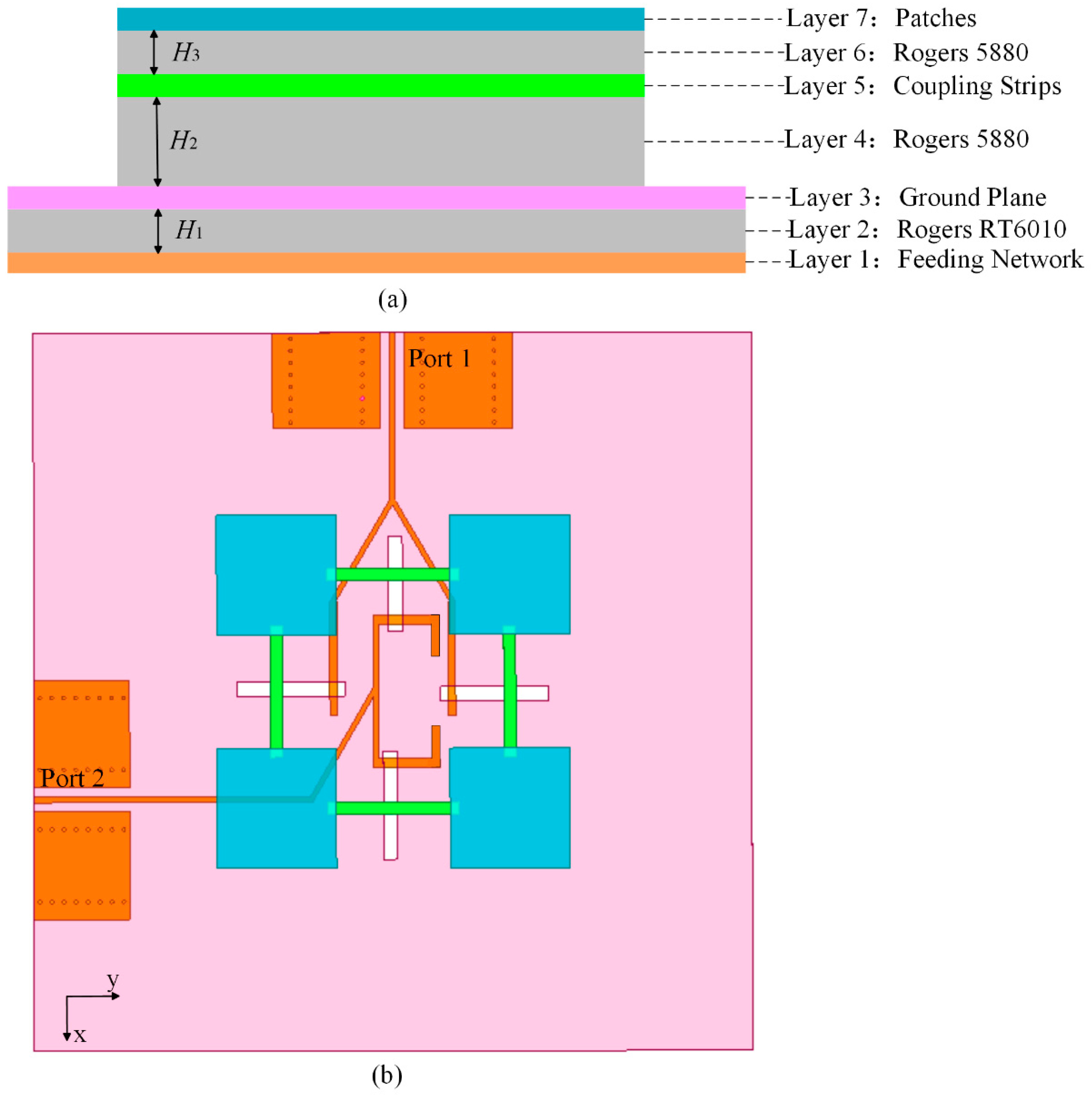



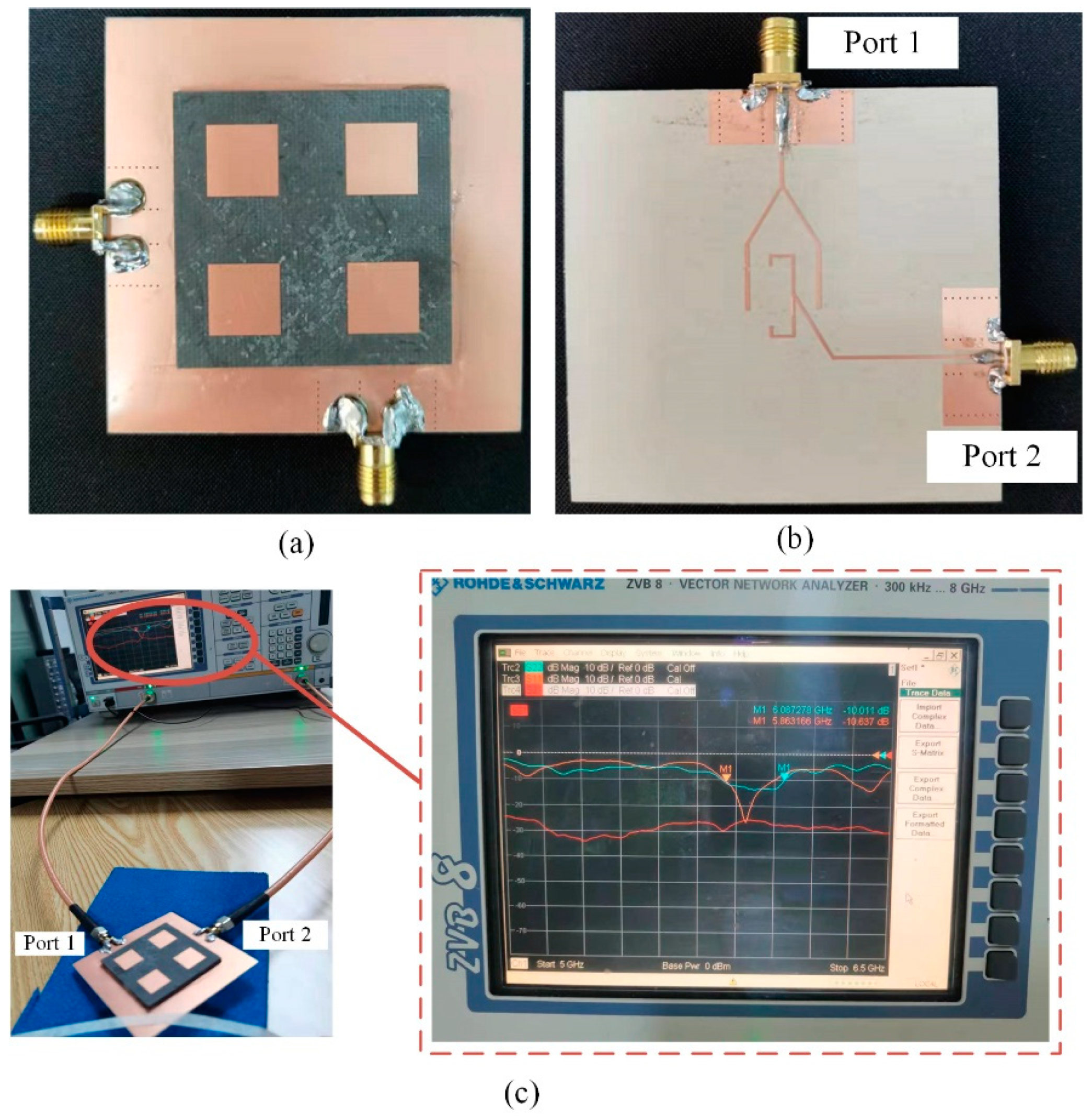
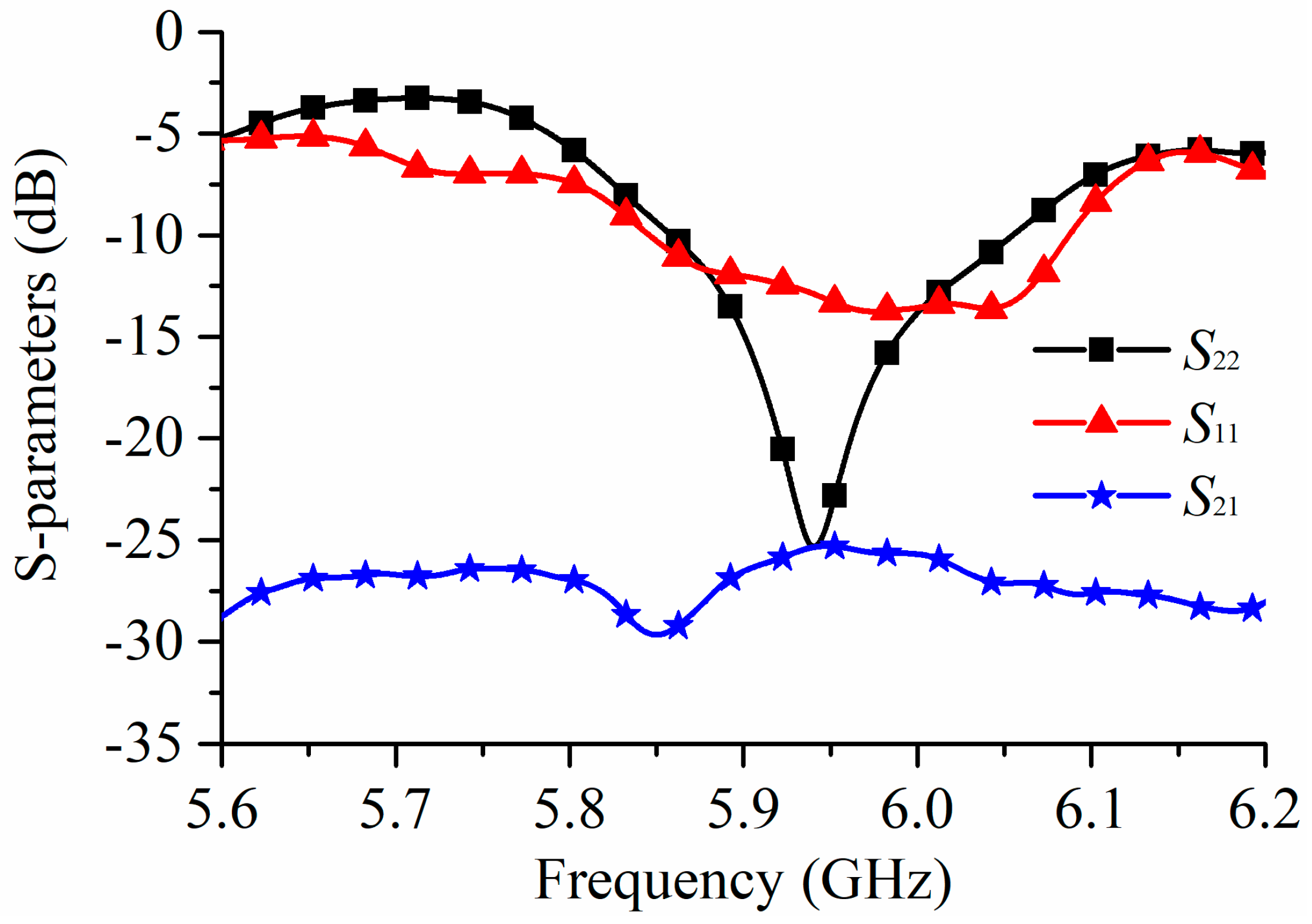
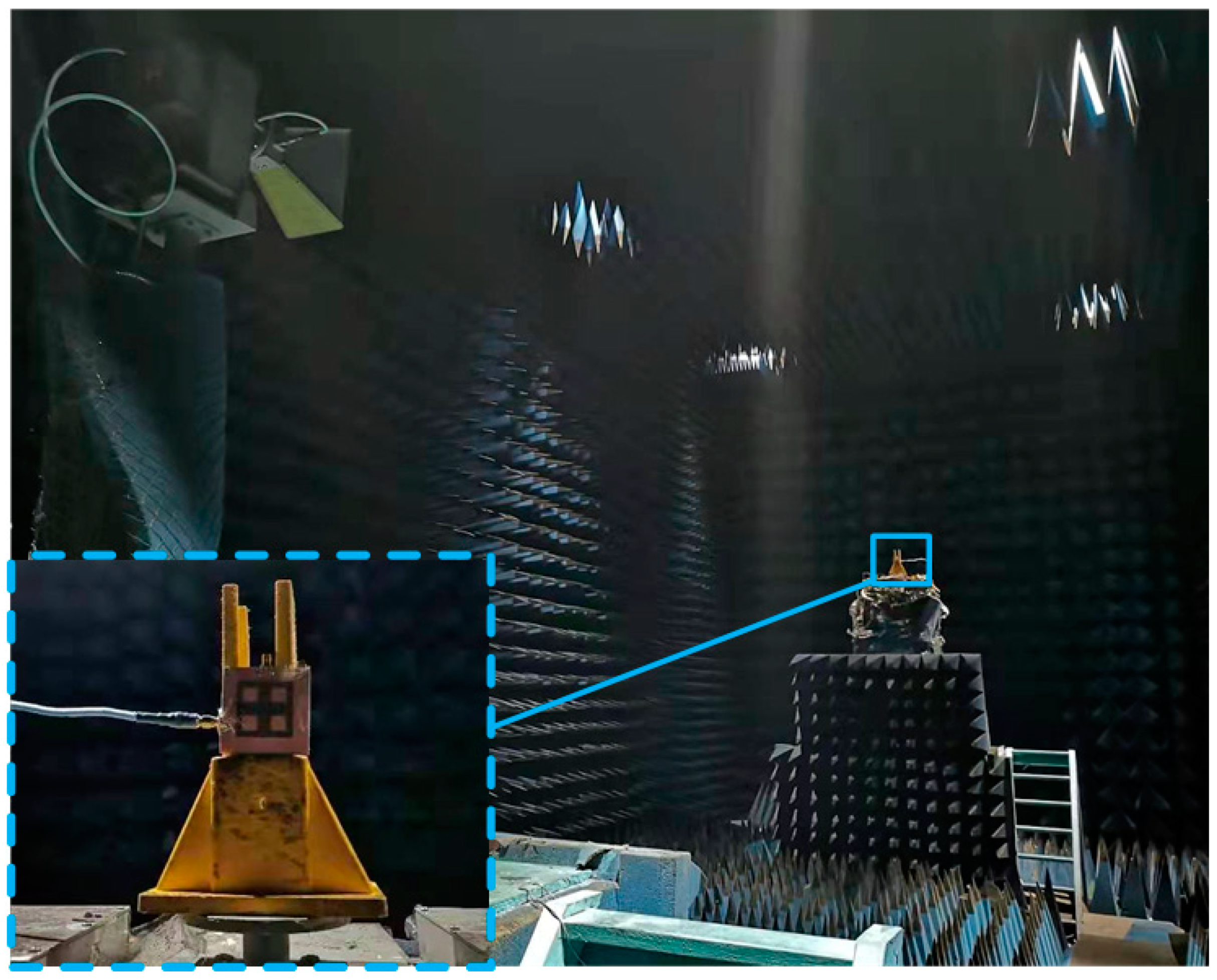
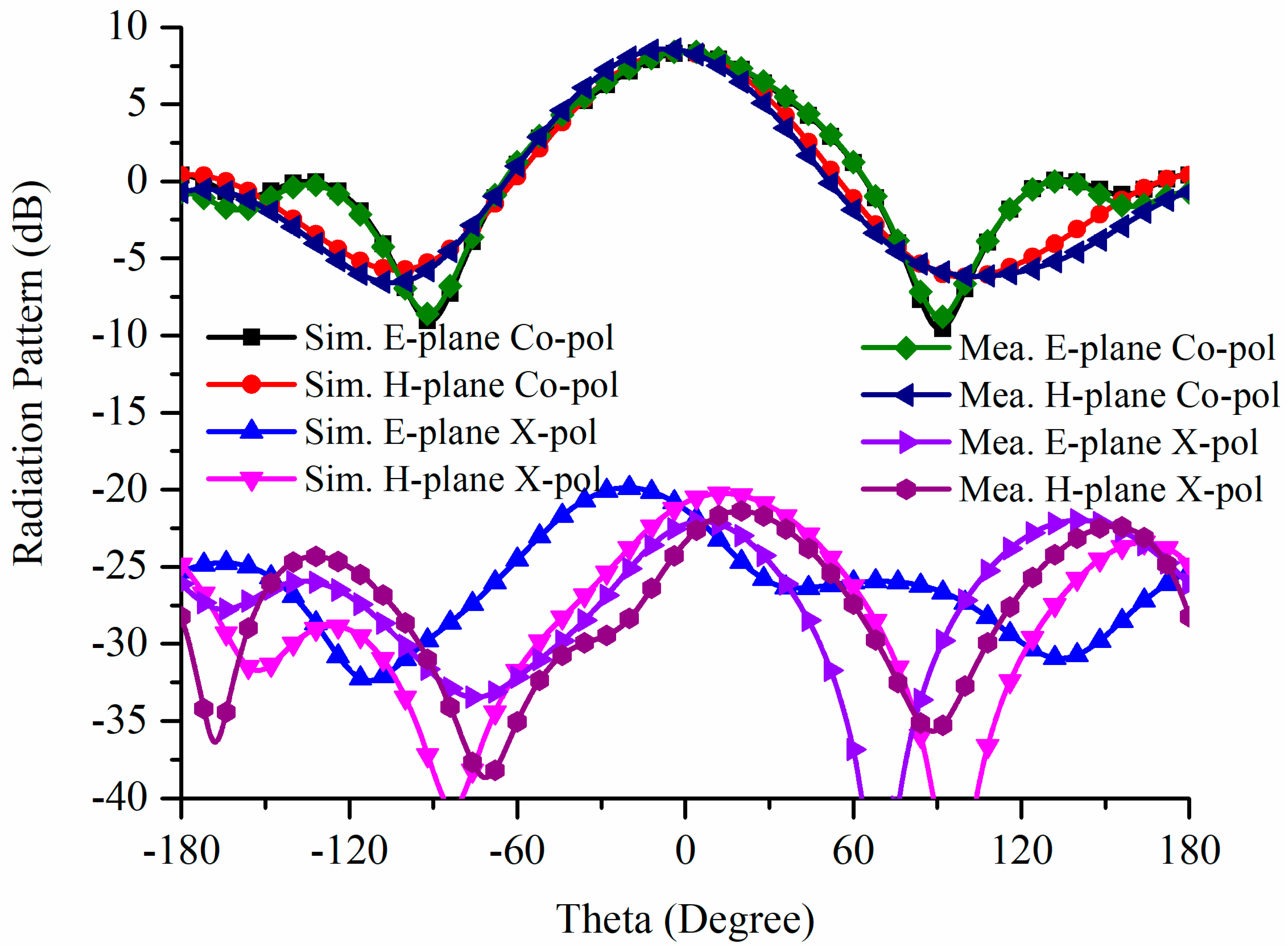
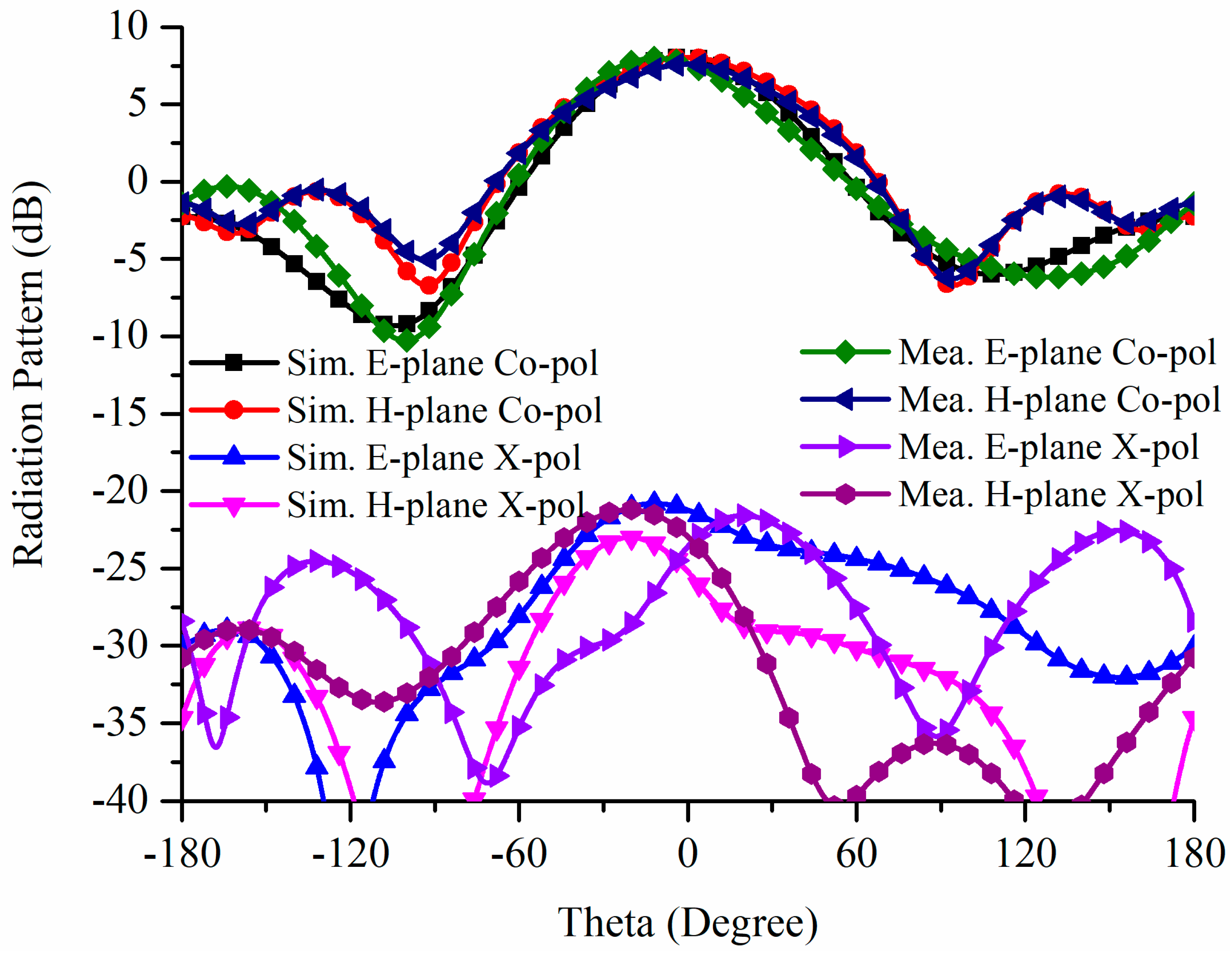
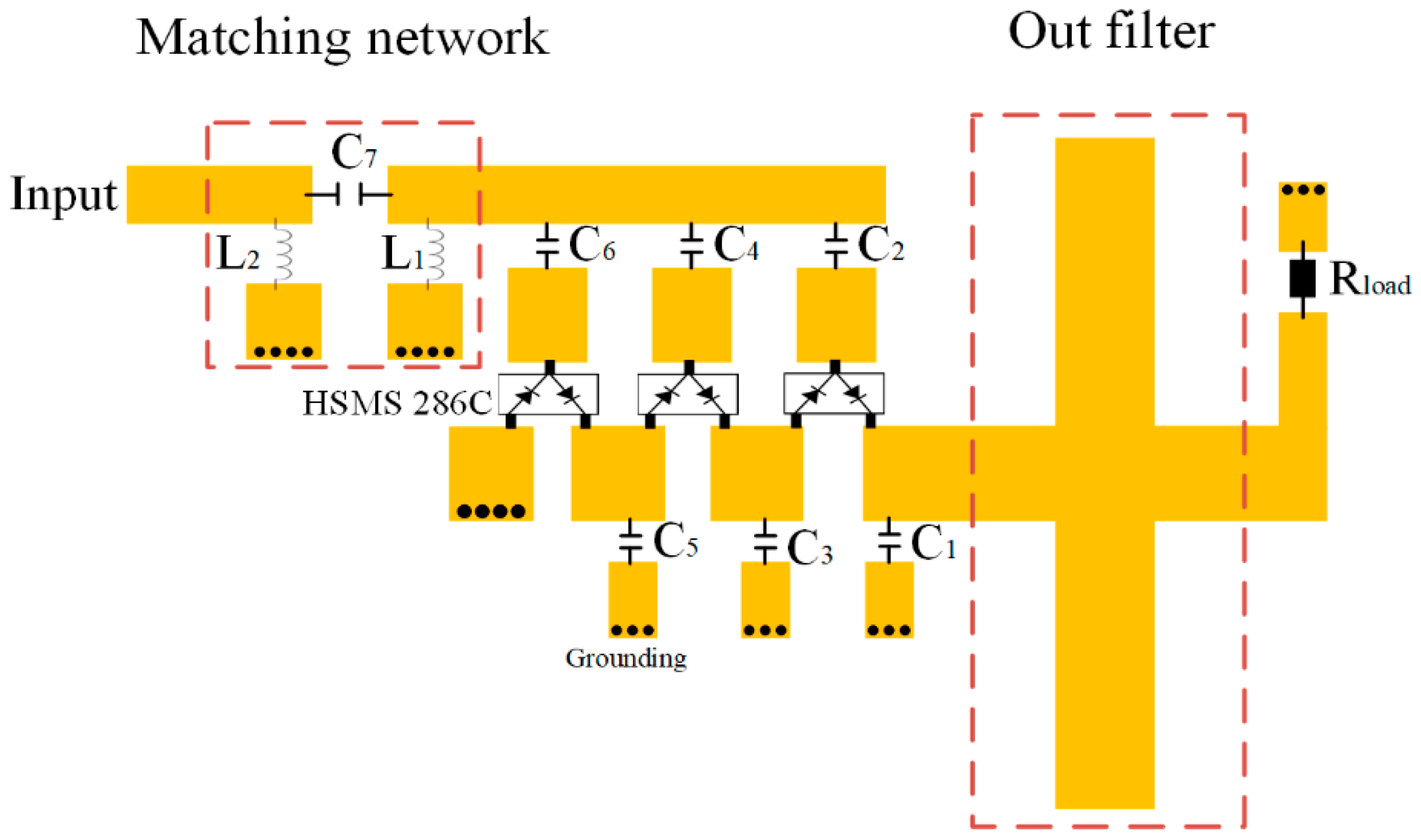
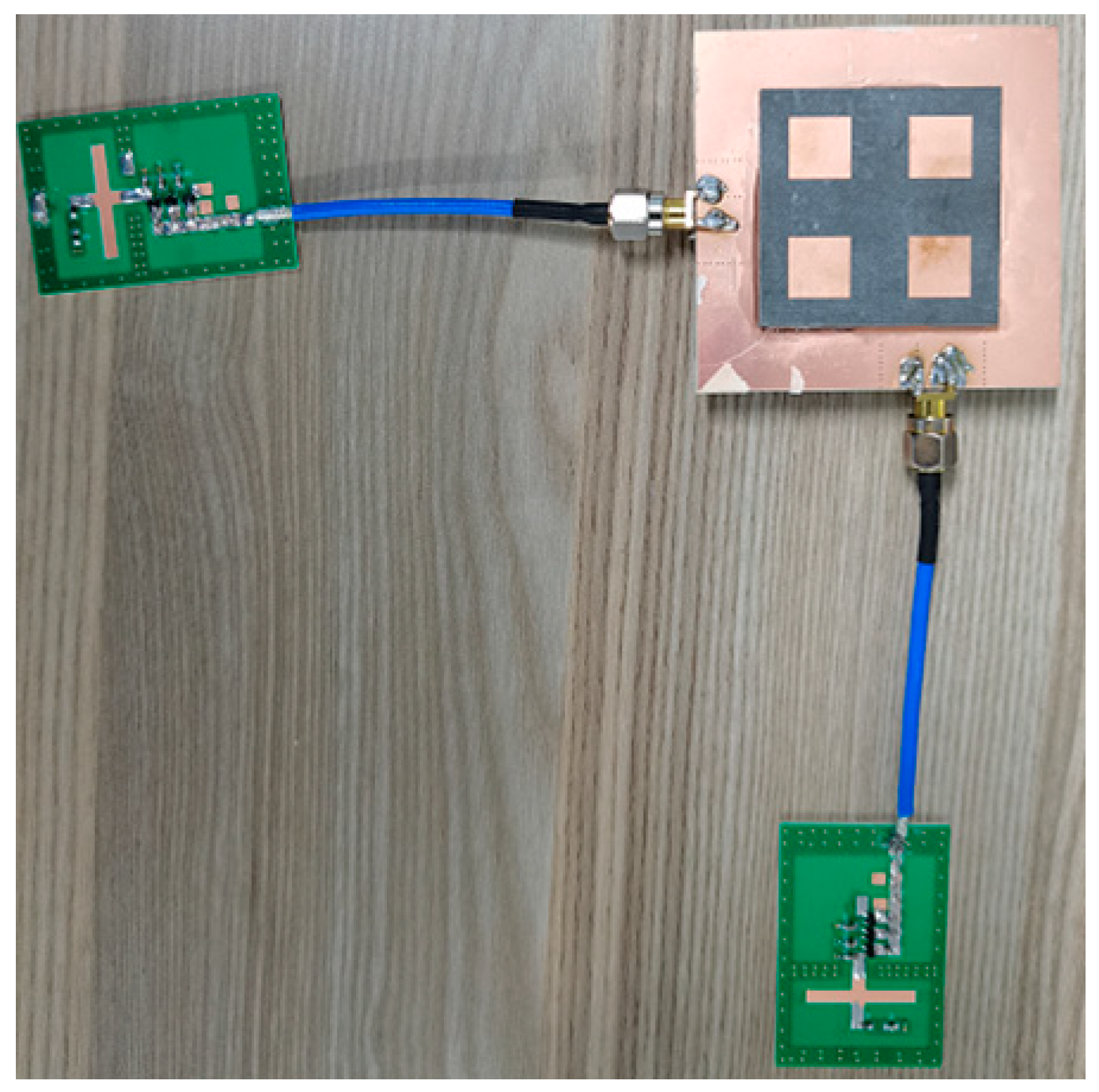
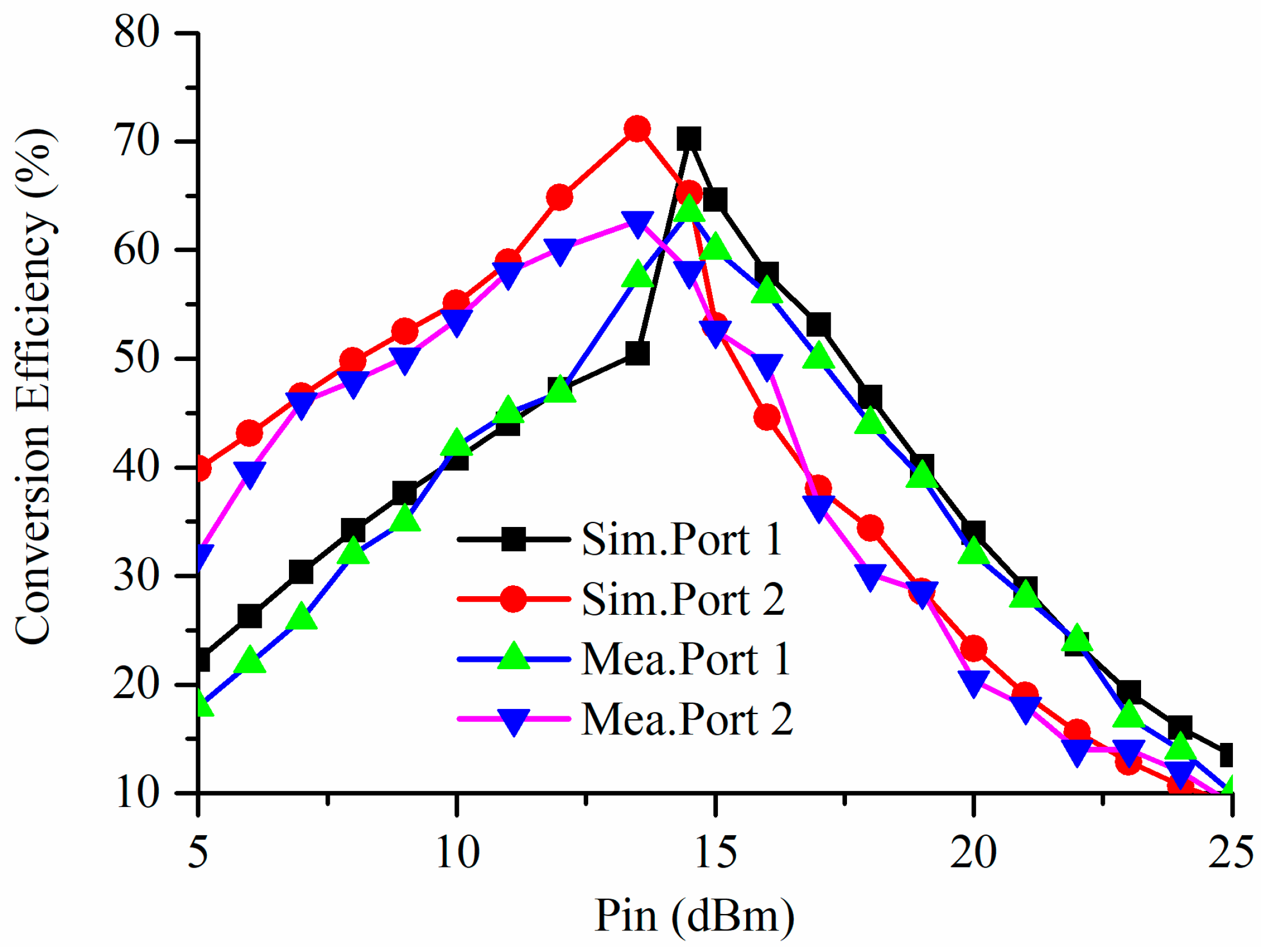
Publisher’s Note: MDPI stays neutral with regard to jurisdictional claims in published maps and institutional affiliations. |
© 2021 by the authors. Licensee MDPI, Basel, Switzerland. This article is an open access article distributed under the terms and conditions of the Creative Commons Attribution (CC BY) license (https://creativecommons.org/licenses/by/4.0/).
Share and Cite
Liao, L.; Li, Z.; Tang, Y.; Chen, X. Dual-Polarized Stacked Patch Antenna for Wireless Communication Application and Microwave Power Transfer. Electronics 2021, 10, 2988. https://doi.org/10.3390/electronics10232988
Liao L, Li Z, Tang Y, Chen X. Dual-Polarized Stacked Patch Antenna for Wireless Communication Application and Microwave Power Transfer. Electronics. 2021; 10(23):2988. https://doi.org/10.3390/electronics10232988
Chicago/Turabian StyleLiao, Liangbing, Zhiyi Li, Yuzhu Tang, and Xing Chen. 2021. "Dual-Polarized Stacked Patch Antenna for Wireless Communication Application and Microwave Power Transfer" Electronics 10, no. 23: 2988. https://doi.org/10.3390/electronics10232988
APA StyleLiao, L., Li, Z., Tang, Y., & Chen, X. (2021). Dual-Polarized Stacked Patch Antenna for Wireless Communication Application and Microwave Power Transfer. Electronics, 10(23), 2988. https://doi.org/10.3390/electronics10232988




